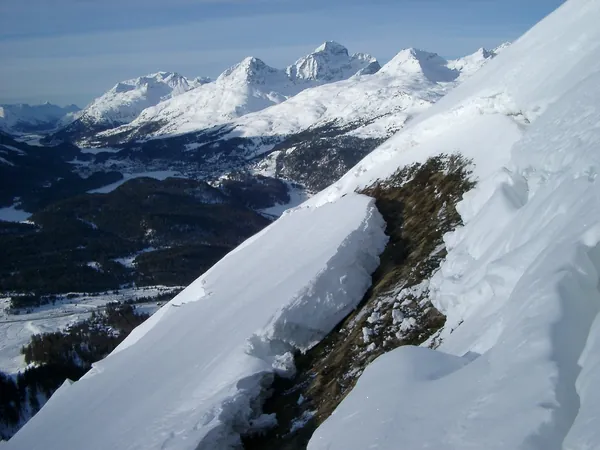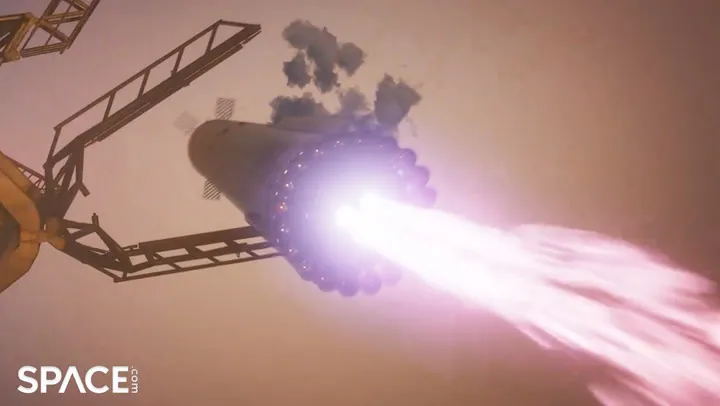
Unraveling the Mystery of Gliding Avalanches: New Insights from Field Monitoring
2025-04-02
Author: John Tan
Unraveling the Mystery of Gliding Avalanches: New Insights from Field Monitoring
Gliding avalanches, a lesser-known yet dangerous phenomenon, occur when an entire snowpack slides down a stable base like grass or rocky surfaces. Unlike other avalanches that can be triggered by external forces, these events occur naturally, often following a specific set of conditions that make their prediction essential for safety.
During winter, the ground retains residual heat from the previous summer, which can lead to the snowpack becoming moist from below. However, in the spring, rain and melting snow can saturate the snowpack from above, further increasing the likelihood of a gliding avalanche. Notably, the formation of glide cracks—gaps that may appear in the snow surface—often serve as harbingers of an imminent avalanche.
Recent research at the WSL Institute for Snow and Avalanche Research (SLF) in Davos, led by scientist Amelie Fees, sheds new light on the mechanisms that initiate gliding avalanches. This groundbreaking study monitored the relationship between variables such as ground temperature and moisture levels over three winter seasons.
In a pioneering approach, researchers installed 44 sensors on the Seewer Berg slope, a site known for frequent winter avalanches. The sensors collected data on ground temperature and liquid water content every 15 minutes, offering unprecedented insight into the conditions that contribute to these massive snow movements. The results revealed vital information about how moisture levels fluctuate over time and how they affect avalanche forecasts.
Fees explains that continuous data collection—including ground surveys—provides more precise predictions compared to traditional weather data alone. By understanding how moisture accumulates at the interface between the ground and the snowpack, experts can better assess the conditions that lead to avalanches.
The creation of a slippery water film underneath the snowpack is crucial for the release of gliding avalanches. This film forms through three primary mechanisms:
Mechanisms Behind Gliding Avalanches
1. **Warm Ground:** The heat from the earth thaws the bottom layer of the snowpack. 2. **Rising Water:** Unfrozen water in the soil seeps into the lower layers of snow. 3. **Water from Above:** Rain and meltwater flow down through the snowpack, saturating it.
Historically, insights into gliding avalanches relied heavily on observational data, noting their prevalence in early winter and spring—a result of warmer ground temperatures and increased water content. These conditions render gliding avalanches particularly hazardous due to their potential volume and unpredictability, as they can occur at any time.
Despite previous knowledge, accurately predicting the precise timing of gliding avalanches has been challenging. Previous attempts, such as artificial triggers, have often failed, and even the presence of glide cracks doesn't guarantee immediate avalanche release. This unpredictability adds to the challenges faced by local safety officers and avalanche forecasting services.
The ongoing research aims to fill in the gaps in our understanding and develop a reliable prediction system. Fees and her team are looking to determine the exact water saturation levels and surface areas that contribute to avalanche initiation, a pivotal step towards improving safety measures in snowy terrains.
With winter looming, the implications of this research could threaten our understanding of avalanche dynamics and highlight the urgency for more comprehensive monitoring systems. As we continuously learn more, it's clear that the battle against gliding avalanches is far from over. Stay alert and appreciative of the fascinating yet dangerous world of winter landscapes, and keep following for more updates on this captivating topic!


 Brasil (PT)
Brasil (PT)
 Canada (EN)
Canada (EN)
 Chile (ES)
Chile (ES)
 Česko (CS)
Česko (CS)
 대한민국 (KO)
대한민국 (KO)
 España (ES)
España (ES)
 France (FR)
France (FR)
 Hong Kong (EN)
Hong Kong (EN)
 Italia (IT)
Italia (IT)
 日本 (JA)
日本 (JA)
 Magyarország (HU)
Magyarország (HU)
 Norge (NO)
Norge (NO)
 Polska (PL)
Polska (PL)
 Schweiz (DE)
Schweiz (DE)
 Singapore (EN)
Singapore (EN)
 Sverige (SV)
Sverige (SV)
 Suomi (FI)
Suomi (FI)
 Türkiye (TR)
Türkiye (TR)
 الإمارات العربية المتحدة (AR)
الإمارات العربية المتحدة (AR)